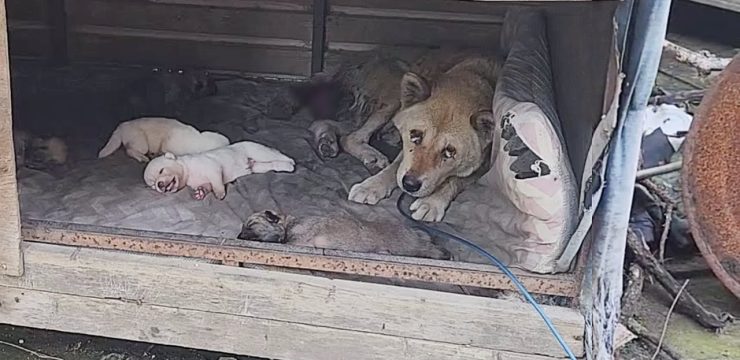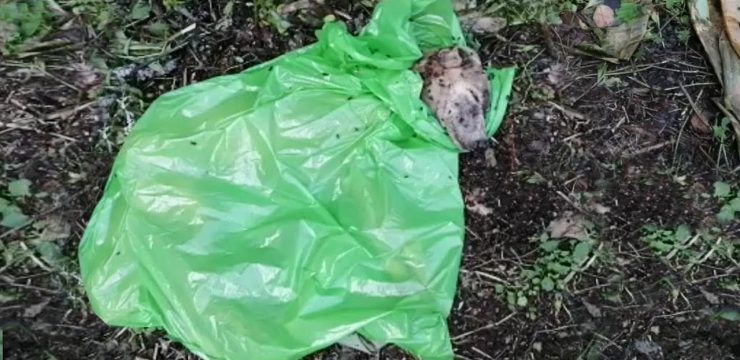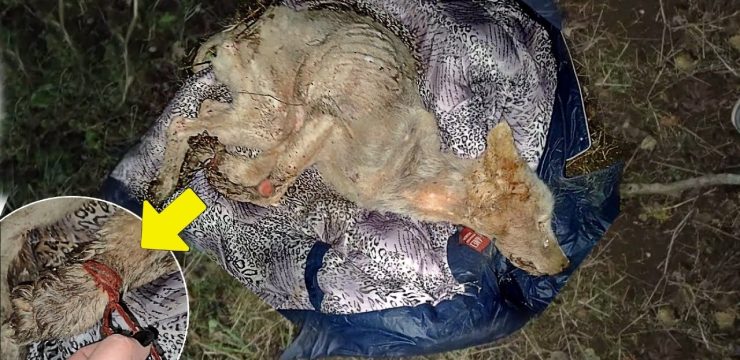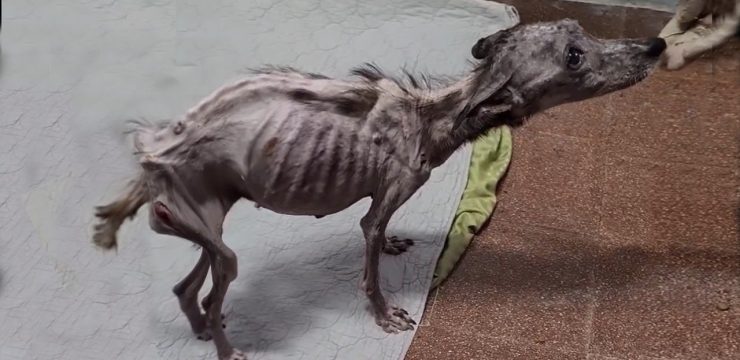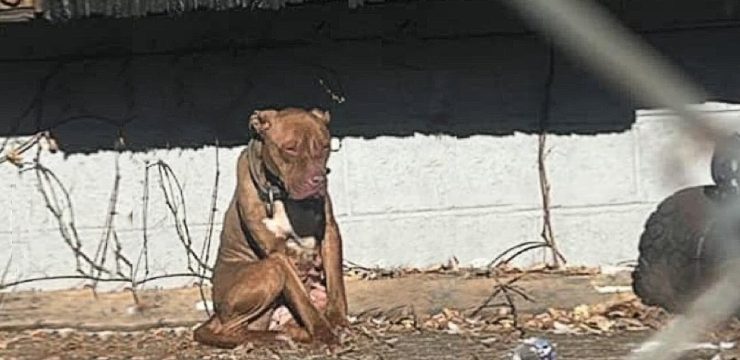On a rainy night that felt like any other, tragedy quietly unfolded on a deserted stretch of road. A small dog had been struck by a passing vehicle and lay still on the wet asphalt, unmoving, his fragile frame illuminated by the occasional flash of headlights in the distance. But he wasn’t alone. Standing beside him was another dog—a sleek black one, alert and watchful. His coat was soaked, his eyes sharp, scanning every movement around them. Though the world moved on, this dog didn’t. He refused to leave his fallen companion, as if some invisible force tethered him there. It wasn’t just loyalty—it was something deeper, something that could only come from a bond built through shared struggle and survival.
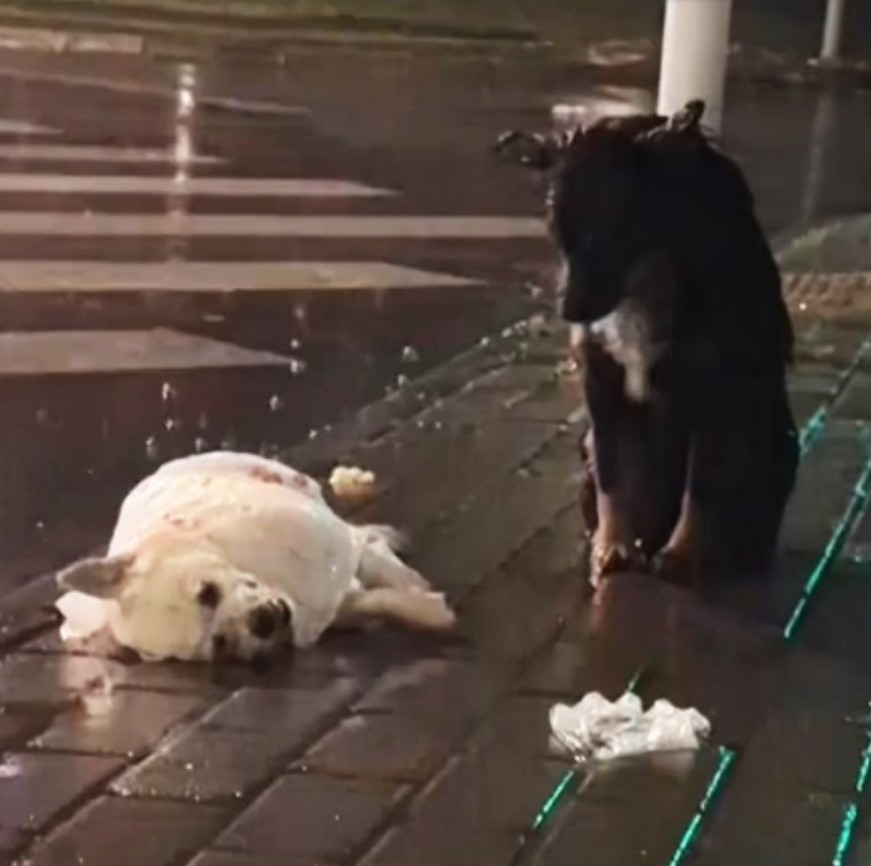
Cars passed, people paused, some tried to coax him away with food, gentle words, even urgent voices—but he wouldn’t budge. He growled low, warning them not to get too close, barking when anyone came near, his stance rigid, protective. Rain poured down, soaking both dogs to the bone, but the black dog stood his ground. He didn’t need words to make his message clear: he was staying. No matter what had happened, no matter what would come, he would not abandon his friend. It was as though he was guarding more than just a body—he was standing vigil for a bond, a memory, a silent promise.
As the long, wet night passed and morning arrived, the scene remained the same. The white dog had not survived, his body still lying cold on the road. Yet the black dog hadn’t moved. He had stood there the entire night, through thunder and rain, keeping silent watch over his friend. His posture no longer bristled with tension, but sorrow had etched itself into every inch of his form. It was a scene that broke hearts—the kind of quiet, powerful grief that needed no translation.
Eventually, someone made a call. Local rescuers arrived, hearts already heavy from what they had heard. They came slowly, carefully, bringing food and soft voices. They laid the white dog to rest with gentle hands and respectful silence. The black dog still didn’t trust them—not fully—but he no longer growled. He stood there, uncertain, his eyes wary but not hostile. The rescuers didn’t rush. They gave him space, time, and the dignity he deserved. And finally, with cautious steps, he allowed them to come closer.
At the rescue center, he didn’t adjust quickly. He remained quiet, often sitting in the corner, eyes distant. He had been a guardian in the rain, and now that role was over. The world he knew had changed. But the team didn’t give up on him. They offered him routine, safety, soft blankets, clean water, and warm meals. They didn’t ask for trust—they earned it, slowly, through kindness and patience. Over time, the black dog began to let his guard down. He started responding to his name, accepting gentle pats, and occasionally wagging his tail.
He was given a spot in the yard—not a grand place, but a quiet, safe corner under the sun where he could watch birds fly overhead and feel the grass under his paws. To many, it might have seemed small, unremarkable. But to him, it was everything. For a dog who had known nothing but abandonment and sorrow, this patch of earth meant freedom. It was a symbol of second chances. Here, he could finally rest without fear, eat without urgency, and heal without pressure. It was his start, his fresh page.
Yet, even as things seemed to improve, a new challenge arose. He stopped eating again. The rescue team noticed immediately—his energy dropped, his eyes lost their glimmer. A vet confirmed what they feared: he had contracted parvovirus, a dangerous and often fatal illness. Swift action was taken. He was moved into isolation, treated with medication and fluids. The room was sterile and quiet, but the care remained constant. Volunteers rotated in, speaking softly, cleaning his space, comforting him with words and presence.
Though sick, the dog showed a gentleness that touched everyone. He no longer barked or growled. Instead, he leaned into hands that stroked him, let out soft sighs when someone sat beside him, and gently licked the fingers of those who fed him. He was still weak, but his spirit was quietly fighting. The strength he once showed in the rain was still there—different now, not fierce and protective, but vulnerable and trusting.
As days passed, he slowly regained strength. Each moment of connection—each eye contact, each wag of the tail—felt like a small miracle. The staff who cared for him came to love him not just for his past, but for the quiet resilience he showed each day. He wasn’t just a dog who had stood by a friend in the rain. He was a survivor who had learned to trust again, to open his heart even after it had been broken.
His journey, marked by loss, sorrow, illness, and recovery, became a story that resonated far beyond the walls of the rescue center. People who heard it were moved to tears. Some donated. Others volunteered. Many simply shared his story, touched by the depth of his loyalty and the proof that even the most broken souls can heal with time, love, and a second chance.
The black dog’s vigil in the rain was never forgotten. It became a symbol—not just of grief, but of what it means to love deeply, to remain loyal even in despair, and to believe in hope when it seems all is lost. His resilience reminded everyone that in a world often filled with cruelty, kindness still matters. And that sometimes, the strongest love is the one that stands silently in the storm, refusing to walk away.
